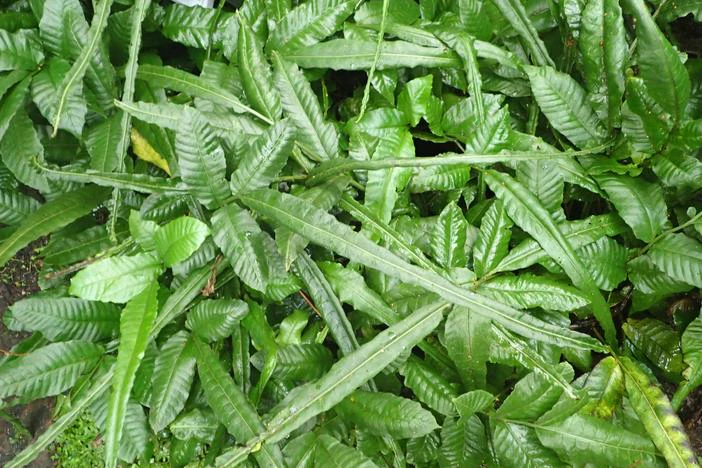Asian Water Fern
(Bolbitis heteroclita)
Asian Water Fern (Bolbitis heteroclita)
/
/

Krzysztof Ziarnek, Kenraiz
CC BY-SA 4.0
Image By:
Krzysztof Ziarnek, Kenraiz
Recorded By:
Copyright:
CC BY-SA 4.0
Copyright Notice:
Photo by: Krzysztof Ziarnek, Kenraiz | License Type: CC BY-SA 4.0 | License URL: https://creativecommons.org/licenses/by-sa/4.0 | Uploader: Kenraiz | Publisher: Wikipedia Commons
























Estimated Native Range
Climate Requirements for Lucknow, India
| This Plant | Your Site | Plant Suitability for Your Location | ||
|---|---|---|---|---|
| • Precipitation | 21" - 210" | 39" | Aquatic | Aquatic |
| • High Temp. | 63°F - 107°F | 105°F | Your summer temperatures are normal for this plant. | Excellent |
| • Low Temp. | 35°F - 74°F | 49°F | Your winter temperatures are normal for this plant | Excellent |
This plant should grow well at your location with about N inches per year (Y minutes per month) of irrigation.
Summary
Bolbitis heteroclita, commonly known as Asian Water Fern, is an evergreen fern native to the humid, shaded stream banks and marshy areas in tropical and subtropical regions of Asia, extending to the Caroline Islands. It typically grows to a height of 0.5-1 feet (0.2-0.3 meters) and can spread widely, with a width of 6-12 feet (1.8-3.7 meters). The fern has delicate, pinnate fronds that resemble those of poison ivy but are harmless. The fronds are bright green and can add a lush, tropical feel to a garden setting or aquarium.
Asian Water Fern is valued for its adaptability to aquatic environments, making it a popular choice for garden ponds and freshwater aquariums. It thrives in full shade and requires high humidity or aquatic conditions, with soils that provide slow or standing drainage. While it can be challenging to grow fully submerged, Bolbitis heteroclita is easier to cultivate as a terrestrial or emersed plant in ponds. It is often used as a decorative element due to its attractive foliage and ease of maintenance when grown in suitable conditions. Gardeners should be aware that this species may be sensitive to changes in water quality and temperature.CC BY-SA 4.0
Asian Water Fern is valued for its adaptability to aquatic environments, making it a popular choice for garden ponds and freshwater aquariums. It thrives in full shade and requires high humidity or aquatic conditions, with soils that provide slow or standing drainage. While it can be challenging to grow fully submerged, Bolbitis heteroclita is easier to cultivate as a terrestrial or emersed plant in ponds. It is often used as a decorative element due to its attractive foliage and ease of maintenance when grown in suitable conditions. Gardeners should be aware that this species may be sensitive to changes in water quality and temperature.CC BY-SA 4.0
Plant Description
- Plant Type: Fern
- Height: 0.5-1 feet
- Width: 6-12 feet
- Growth Rate: Slow
- Flower Color: N/A
- Flowering Season: Non-Flowering
- Leaf Retention: Evergreen
Growth Requirements
- Sun: Full Shade
- Water: High, Aquatic
- Drainage: Slow, Standing
Common Uses
Deer Resistant, Low Maintenance, Potted Plant, Water Garden
Natural Habitat
Humid, shaded stream banks and marshy areas in tropical and subtropical Asia
Other Names
Common Names: El Niño Fern, Trillingbräken, 尾葉實蕨;大實蕨
Scientific Names: Bolbitis heteroclita, Leptochilus cuspidatus, Leptochilus heteroclitus, Bolbitis cuspidata, Acrostichum flagelliferum, Bolbitis scandens, Bolbitis inconstans, Campium heteroclitum, Gymnopteris inconstans
GBIF Accepted Name: Bolbitis heteroclita (C.Presl) Ching